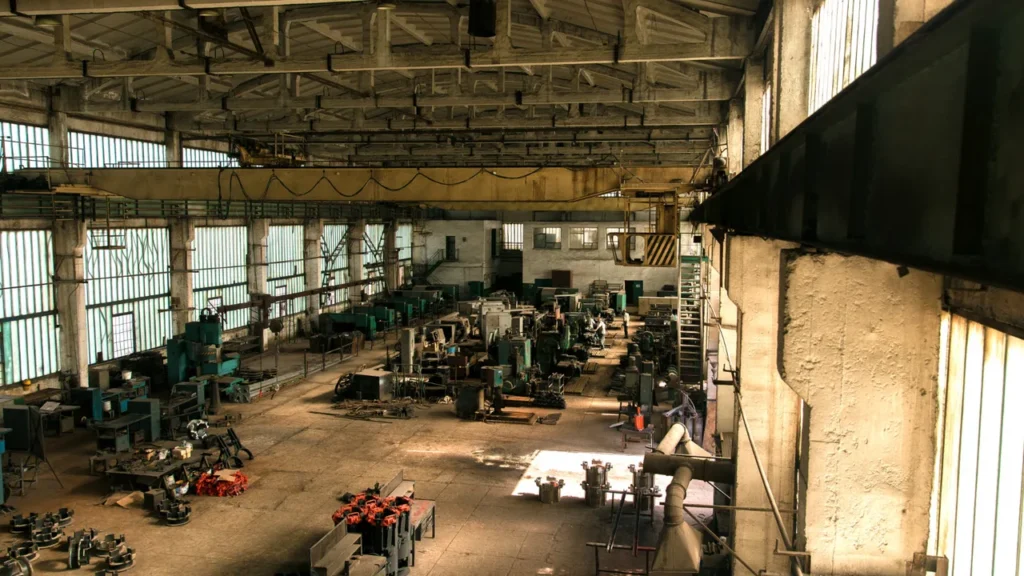In today’s highly competitive manufacturing landscape, companies are under pressure to produce more, reduce delays, and streamline operations. One of the most effective ways to meet these demands is by investing in a modern steel structure workshop. With its flexible design, fast construction, and optimized interior layout, a prefabricated steel workshop can drastically improve production speed, efficiency, and long-term operational performance.
Introduction to Modern Prefabricated Steel Workshops
As industries evolve, production facilities must keep up with rapid technological and workflow changes. Prefabricated steel workshops are engineered to support these needs—from creating smooth material flow to integrating automated systems. Compared to traditional brick or concrete buildings, steel offers superior strength, larger clear spans, and better adaptability, making it ideal for businesses seeking improved efficient workflow and assembly-based operations.
Why the Steel Structure Workshop Model Works for Industrial Production
Built for Efficiency and Scalability
A steel structure workshop is designed with modularity in mind. Whether a company needs to expand production lines, reorganize equipment placement, or scale assembly operations, the steel framework makes everything simpler. Walls, beams, and partition areas can be adjusted easily without disrupting the structural integrity.
This scalability is especially helpful for industries handling seasonal production spikes or equipment upgrades—ensuring the building never becomes a limiting factor for growth.
Faster Construction for Faster Operations
Prefabricated components are manufactured off-site, then transported and assembled rapidly. This reduces overall construction time by 40–60%, enabling businesses to start production sooner. Faster construction also means reduced downtime, fewer labor requirements, and an earlier return on investment.
For example, a medium-sized steel structure workshop spanning 3,000–5,000 sqm can often be completed within just a few weeks—far quicker than traditional construction methods.
Layout Optimization for Better Production Flow
Maximize Space for Assembly Line Efficiency
One of the biggest advantages of a prefabricated steel workshop is the large, unobstructed interior space. Clear-span structures allow production planners to design optimized assembly line layouts tailored to the specific manufacturing process. This includes:
- Linear assembly line for high-volume processing
- U-shaped layout for flexible multi-stage operations
- L-shaped layout for limited land or specialized processes
These configurations reduce unnecessary movement, shorten handling time, and create an efficient workflow for both manpower and machinery.
| Layout Type | Best For | Efficiency Level |
|---|---|---|
| Linear | High-volume repetitive production | ★★★★★ |
| U-Shape | Flexible multi-stage production | ★★★★☆ |
| L-Shape | Limited land or specialized workflow | ★★★★☆ |
Clear Span Design for Uninterrupted Movement
The strength of steel allows for wide spans of 20–40 meters without interior columns. This creates a spacious environment where forklifts, conveyor systems, and raw materials can move freely, enhancing efficient workflow and reducing bottlenecks often found in older workshop designs.
Structural Features That Improve Operational Performance
High Load Capacity for Industrial Equipment
A steel structure workshop can support heavy machinery, multiple production lines, mezzanines, and overhead cranes. This makes it perfect for industries like automotive, electronics, metal fabrication, packaging, and large-scale assembly operations. Overhead cranes can also be integrated directly into the main frame, enabling seamless lifting, loading, and transporting processes inside the workshop.
Ventilation, Insulation, and Lighting Efficiency
Steel workshops are designed to integrate insulation systems, smart ventilation, and natural lighting panels. This leads to:
- Reduced energy consumption
- Cooler interior temperatures
- Lower utility costs
- Better working conditions for employees
Skylights, translucent panels, and reflective roofing improve daytime lighting naturally, cutting energy wastage by up to 30%.
Safety-Oriented Structural Design
Steel is naturally fire-resistant and non-combustible, making it safer for operations involving welding, heat treatment, or flammable materials. Protective coatings such as galvanizing or paint systems extend the building’s lifespan by preventing corrosion. Steel structures also perform better in harsh weather conditions, offering greater resilience against wind, snow, and seismic activity.
Enhancing Workflow Efficiency Through Smart Interior Planning
Zoning for Different Production Stages
Modern production environments rely heavily on organized zoning. A typical steel structure workshop can be sectioned into:
- Raw material storage zones
- Cutting and processing areas
- Assembly line pathways
- Quality control zones
- Finished goods storage
This strategic zoning minimizes cross-contamination, reduces travel distance, and accelerates throughput.
Seamless Integration with Automated Systems
Automated production tools—AGVs (Automated Guided Vehicles), conveyor belts, IoT systems, and robotics—operate best in large open spaces. A steel workshop provides a stable, obstruction-free environment for implementing these systems, enabling smart factories to boost throughput and accuracy.
For industries transitioning toward automation, a steel structure workshop becomes the perfect platform to support advanced production technology.
Cost Advantages of Prefabricated Steel Workshops
Reduced Labor Costs
Prefabrication significantly reduces on-site labor, material wastage, and construction time. These savings allow businesses to allocate more resources toward production and expansion rather than structural construction.
Long-Term Operational Savings
Energy-efficient insulation, low maintenance, and superior durability contribute to long-term cost reduction. Steel structures can last 30–50 years or more with minimal upkeep, maximizing return on investment.
Industry Applications of the Steel Structure Workshop
Manufacturing Plants
Automotive, electronics, machinery, packaging, and household goods manufacturers rely heavily on steel workshops due to their need for flexible, high-capacity production areas.
Processing Facilities
Metal fabrication, plastics processing, and material handling businesses benefit from the robust load capacity of steel structures.
Assembly-Based Industries
Products that require step-by-step processes—from appliances to industrial components—operate more efficiently within a steel structure workshop.
Case Example: Improving Production Flow Through Steel Workshop Design
Imagine a company previously operating in a traditional building filled with internal columns and narrow pathways. After shifting to a modern steel structure workshop, the layout was redesigned to support a smoother assembly line, resulting in:
- 30% faster material movement
- 15% higher daily output
- Reduced labor fatigue and errors
- More efficient workflow coordination
As demonstrated, companies that adopt a steel structure workshop experience significantly better operational flow with minimal disruption to operations.
Key Considerations When Planning a Prefabricated Steel Workshop
Span, Height, and Column Grid
Select the right span and grid to support machinery layout and future expansion.
Equipment Load and Crane Capacity
Ensure the steel beams and frame can support overhead cranes, mezzanines, and heavy machines.
Workflow-Based Layout Planning
Optimize the assembly line and logistics route to reduce bottlenecks and improve overall production speed.
Future Expansion Potential
Steel workshops can be extended or reconfigured easily—ideal for fast-growing companies.
Conclusion: Building the Future of Efficient Production
A prefabricated steel structure workshop is more than just a building—it is an integrated system designed to enhance productivity, workflow efficiency, and long-term industrial performance. With clear-span spaces, flexible interior layouts, and support for automation, steel workshops have become essential for modern factories striving for superior production flow.



